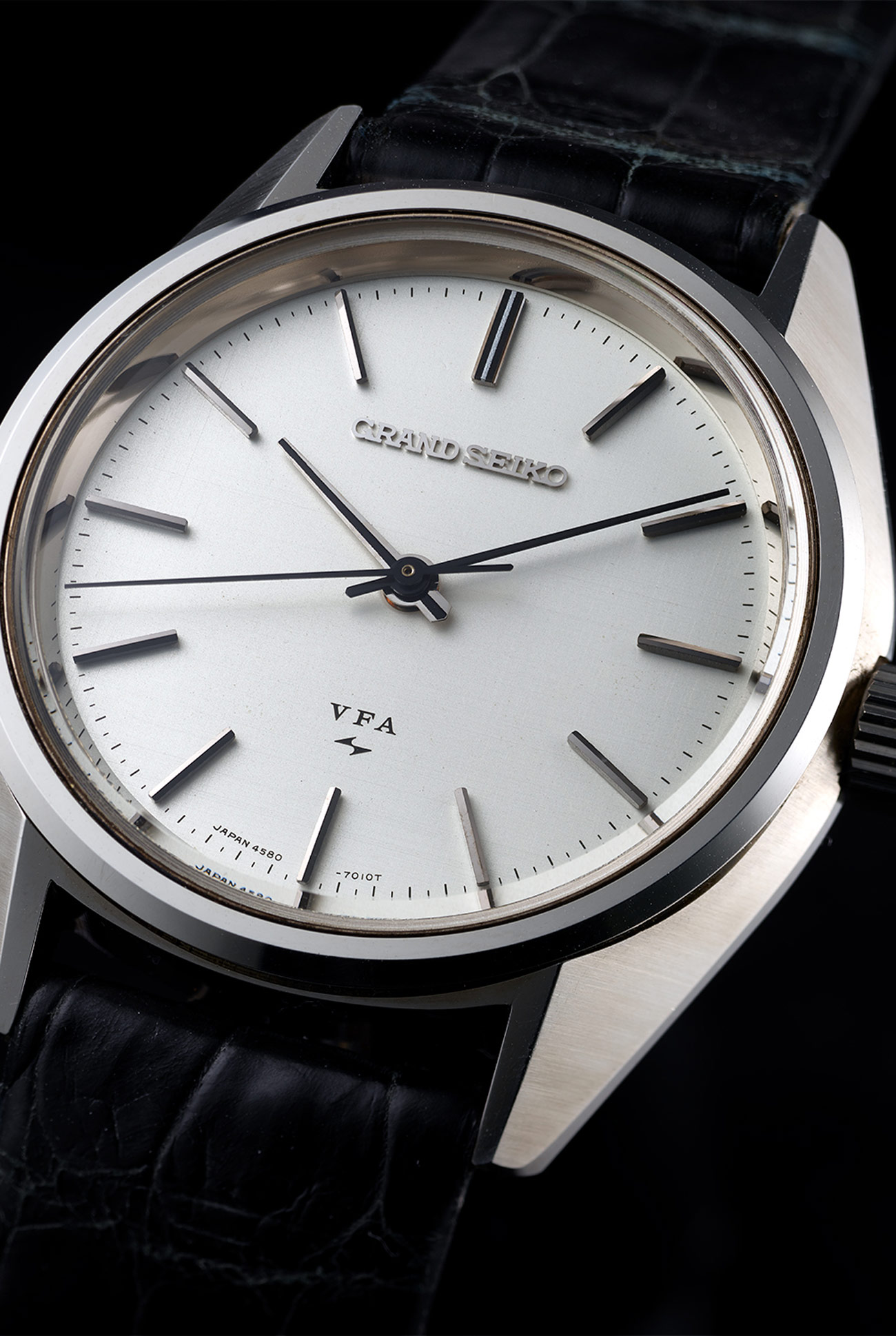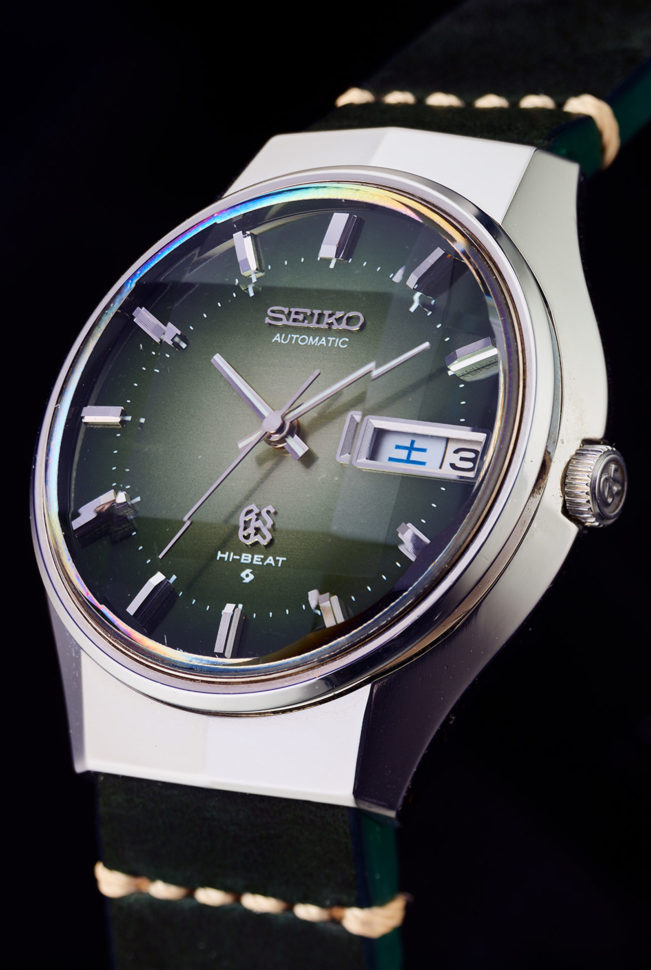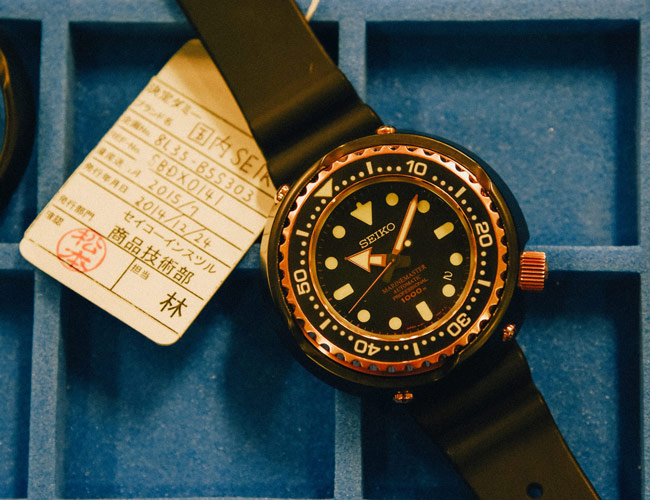Y
ears ago, Gerald Donovan sold all his watches. His collection, comprised of high-end timepieces from vaunted names in horology — Rolex, Panerai, FP Journe and MB&F to name a few — were eventually all done away with. But Donovan wasn’t giving up watches for good. He replaced his collection with vintage watches from one brand, and one brand only: Grand Seiko.
“The original intent was to have twenty-two watches in the collection — one representative of each of the movements that were used in the vintage era,” Donovan tells me. “It didn’t take too long before things got out of hand.”
Donovan’s interest in watches goes back a couple of decades — his first “decent” watch, he says, was a Patek Philippe he bought in 1998. A few years later he started photographing his watches, and when he took photos of his quartz and Spring Drive Grand Seikos, he noticed how detailed they were. “I was just blown away by the quality of the finishing,” he says. “This got me looking deeper into the brand, and it was when I was looking for a mechanical Grand Seiko to add to my collection, I realized that rather than get a single modern watch for $6,000 or so, I could pick up a handful of the vintage pieces for the same amount.”
Today, Donovan runs The Grand Seiko Guy, a website whose purpose is twofold: selling many of the numerous Grand Seiko’s Donovan’s acquired and, more importantly, sharing the wealth of information he’s dug up on the brand. “Every single reference that ever existed is detailed on the site, including model and catalog numbers, movement references, originating factory, case dimensions and even which catalogs the reference appears in,” says Donovan. “If a watch is not detailed on my site, it almost certainly does not legitimately exist.”

The hyper-accurate Grand Seiko 4580-7010 is believed to be just one of 128 examples of the 4580 movement.
This has not been easy. Though in recent years, Grand Seiko has been more heavily marketed in the western world, Grand Seikos have, historically, been contained to their native Japan. “There is very little information on the vintage pieces — certainly very little in English — when compared to western brands,” says Donovan. “When I started collecting I was going at it pretty much blind and had to work things out for myself. Because of the relative lack of focus on the brand, not even well-established Internet forums that specifically targeted Japanese watches were much help. People to this day are a lot more focused on the early Seiko sports watches.”
Donovan, however, has been able to find a treasure trove of information from catalogs of the brand’s watches, though he gets some incredible info from in-house magazines that the Grand Seiko published. According to Donovan, there are two types: magazines sent to dealers to keep them updated on products and merchandising guidelines, and an internal publication with info on the company relevant to the staffers including both Grand Seikos’ achievements as well as more personal events, such as birthdays, marriages, et cetera.
The original intent was to have twenty-two watches in the collection. It didn’t take too long before things got out of hand.
These publications and catalogs, along with “all but two” of his watches are acquired from Japan, mostly through online auctions and dealer websites. “I spend literally hours every day checking auction listings and dozens of dealer websites looking for watches or interesting items related to the brand,” he says. “I’ve also made some trips to Japan to visit watch fairs and meet Japanese dealers and collectors in person… [but] the vast majority of the watches that go through my hands are acquired remotely. You have to really know your stuff to do this and not get burned.”
So why all the trouble? Well, some watch enthusiasts consider vintage Grand Seiko watches to be highly underrated in their day — when they were produced in the ’60s and ’70s they were some of the most accurate and expertly-finished timepieces on the market. “I love the purity of the intent. Seiko set out to, quite simply, make the best wristwatch in the world, to beat the Swiss at their own game,” Donovan says.

If you’re looking for a slightly weirder (and slightly more affordable) gateway into Grand Seikos, the 5646-7020 boasts a faceted crystal, green sunburst dial and “hooded” lugs. Yours for $2,800.
“Every single reference is designed for telling the time. There are no tool watches or complications. They didn’t do divers; they didn’t do GMTs or world timers; they didn’t do chronographs; they didn’t do moon phases. Which I think is really interesting because Seiko produced all of those outside the Grand Seiko brand over this period, but kept the range focused solely on the original stated purpose,” he continues. “And yet, despite this singularity of purpose, there is an enormous variety of design across the range.”
Donovan thinks others are beginning to catch on. For one, he notes, Grand Seiko today is putting much more effort into increasing its worldwide footprint, thus drumming up interest in the band’s older timepieces by collectors. “One thing that I have observed is that increasingly I am being approached by collectors who have previously focussed solely on the high-end Swiss brands like Rolex or Patek Philippe, who want to ‘dip their toes’ into vintage Grand Seiko,” he says. “This, to me, speaks volumes about the inherent quality of these watches.”
Seiko has seemingly mastered every facet of watchmaking. Read the Story


